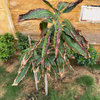Does any one Know anything about this variety or Magonsteen?
soaht
11 years ago
Related Stories

WORKING WITH PROSWhat Do Landscape Architects Do?
There are many misconceptions about what landscape architects do. Learn what they bring to a project
Full Story
MATERIALSInsulation Basics: What to Know About Spray Foam
Learn what exactly spray foam is, the pros and cons of using it and why you shouldn’t mess around with installation
Full Story
MOST POPULARWhat to Know About Adding a Deck
Want to increase your living space outside? Learn the requirements, costs and other considerations for building a deck
Full Story
HEALTHY HOMEWhat You Need to Know About Dust and How to Fight It
Breathe easier with these 10 tips for busting mites, dander and other microscopic undesirables
Full Story
BUDGETING YOUR PROJECTConstruction Contracts: What to Know About Estimates vs. Bids
Understanding how contractors bill for services can help you keep costs down and your project on track
Full Story
KITCHEN SINKSEverything You Need to Know About Farmhouse Sinks
They’re charming, homey, durable, elegant, functional and nostalgic. Those are just a few of the reasons they’re so popular
Full Story
WORKING WITH PROS10 Things Decorators Want You to Know About What They Do
They do more than pick pretty colors. Here's what decorators can do for you — and how you can help them
Full Story
LIGHTINGWhat to Know About Switching to LED Lightbulbs
If you’ve been thinking about changing over to LEDs but aren't sure how to do it and which to buy, this story is for you
Full Story
REMODELING GUIDESWhat to Know About Budgeting for Your Home Remodel
Plan early and be realistic to pull off a home construction project smoothly
Full Story
ARCHITECTURE10 Things to Know About Prefab Homes
Are prefab homes less costly, faster to build and greener than homes constructed onsite? Here are answers to those questions and more
Full StoryMore Discussions







tropicbreezent
soahtOriginal Author
Related Professionals
Comstock Park Landscape Architects & Landscape Designers · Carson Landscape Architects & Landscape Designers · Clark Landscape Architects & Landscape Designers · Garden City Landscape Architects & Landscape Designers · Horsham Landscape Architects & Landscape Designers · Redondo Beach Landscape Architects & Landscape Designers · Paradise Landscape Architects & Landscape Designers · McKinney Landscape Contractors · Bergenfield Landscape Contractors · Damascus Landscape Contractors · Mastic Beach Landscape Contractors · Oak Harbor Landscape Contractors · Rockwall Landscape Contractors · Streamwood Landscape Contractors · University City Landscape ContractorsDoglips
Doglips
soahtOriginal Author
parker25mv
parker25mv
tropicbreezent